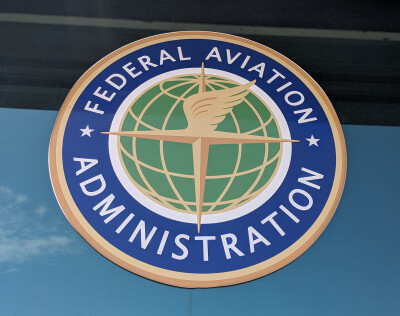On the first day of Commercial UAV Expo 2023 in Las Vegas, the FAA’s Jeffrey Vincent and Wing’s Dallas Brooks, Co-Chairs of the Drone Safety Team (DST), announced that the organization has a new charter. At a well-attended public session, Vincent and Brooks signed the new charter, setting up the stage for more cooperation between industry and federal regulators.
The Drone Safety Team is an industry/government partnership committed to ensuring the safe operations of Unmanned Aircraft Systems (UAS) in the NAS. Co-chair Jeffrey Vincent is the FAA Executive Director for the Unmanned Aircraft Systems (UAS) Integration Office in Aviation Safety (AVS). He is responsible for safely integrating unmanned aircraft into the National Airspace System (NAS). Fellow co-chair Dallas Brooks is the Aviation Regulatory Lead officer for Wing, an Alphabet company.
During the Open Plenary meeting, Vincent and Brooks not only announced their new charter but they shared their plans to re-focus the organization to tackle some of the most pressing challenges facing the industry today. Brooks and Vincent explained that the DST, after a hiatus, is new under new management, and the group is serious about gathering data that would allow the organization to contribute to the fast and safe integration of crewed and uncrewed aviation to the NAS.
Brooks and Vincent explained in detail the new organization’s charter and its emphasis on transparency as the guiding principle of the new DST management philosophy.
They clarified to the attendees that the current website (www.dronesafetyteam.org), as well as email addresses and social media accounts are not official anymore and do not reflect the current status of the organization. Vincent and Brooks explained that DST is in conversation with the previous administration to take over the website and update it to reflect the changes contained in the new charter. They also expressed their desire to accept new members and encouraged attendees to email [email protected] requesting membership.
During the presentation, the co-chairs stated that the DST’s old structure was “inflexible” and “limits the DST’s agility to address new challenges.” They said that the group’s updated bylaws will allow DST’s co-chairs to create “ad-hoc” committees as needed to focus on emerging problems.
Potential new working groups, more aligned with the dynamic nature of this new charter, include:
Safety Management System (SMS) framework for Commercial Drone applications
- Tailoring SMS frameworks for appropriateness and fit.
- Part 107, Part 135 and (ultimately) Part 108.
- Builds and expands on previous DST work.
Drone-to-drone deconfliction
- ASTM standards
- Upcoming D2D initiative in the DFW area (package delivery)
- Explore integrated or complimentary solutions for other use cases.
At the conclusion of the presentation, the two co-chairs opened the floor to a question and answer session that lasted well over 45 minutes. After the Q&A was completed, Vincent and Brooks signed the new charter, launching a new era of cooperation with the FAA, industry, and academia as they look forward to increasing the number of members while taking a more active and pro-active role in the safe integration of crewed and uncrewed aviation over the NAS.















Comments